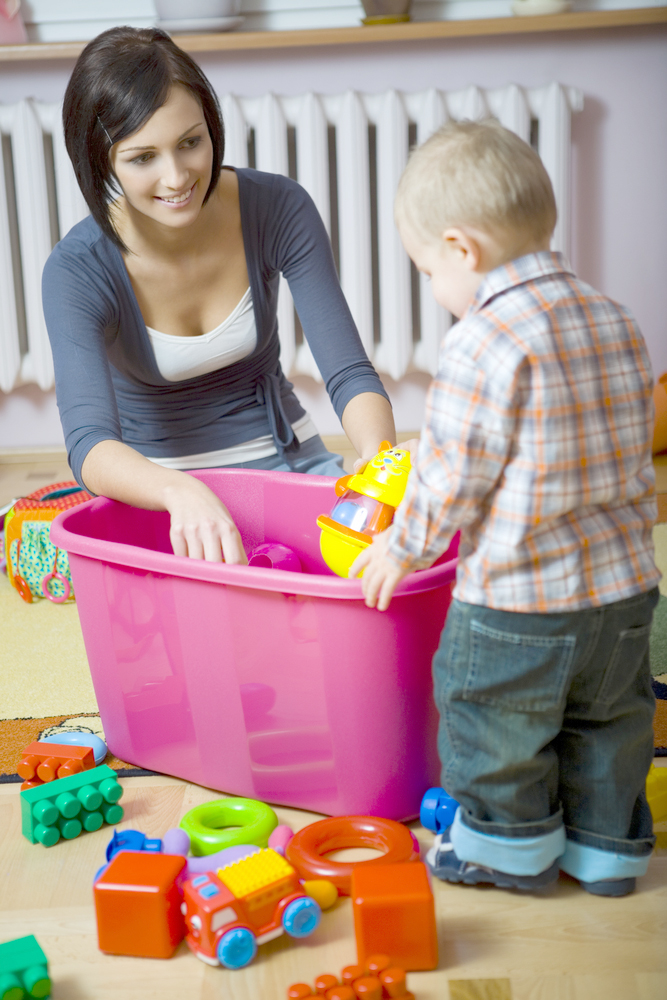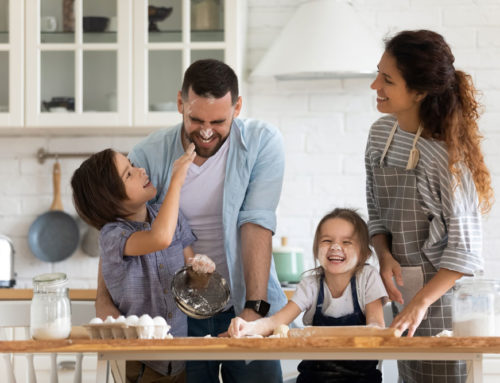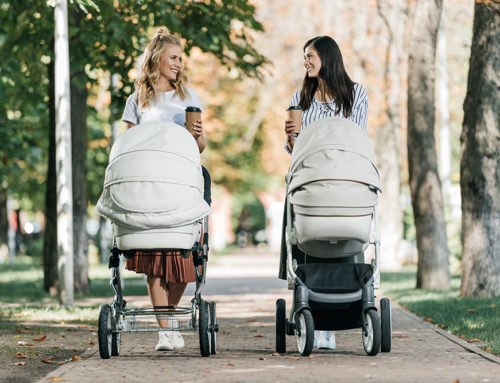Now that Daylight Savings Time has begun, it won’t be long before you can finally open the windows and breathe in that fresh, spring air. But before you head outside, you must step over a menagerie of snow boots, sneakers and other kid gear crowding up your floor. It’s the perfect excuse to start the dreaded spring cleaning…but where to begin?
To help make magic out of the madness that is your cluttered home, consider these tips from professional organizers that know how to tackle your home’s biggest messes and how to minimize future clean-up in high-traffic areas.
Front and Center
As soon as you walk in the house, you are immediately confronted with clutter, but by adopting a different way of thinking, you can clean that area once and for all. “Keeping your entry way clutter-free is largely about creating habits,” explains professional organizer Leah Stanton of Serene Spaces (www.Serenespaces.com). “Create the habit of stopping and stowing when you first enter the house.” Designating shelves or closet space for each family members’ belongings gives everyone their own turf.
To get kids involved with the daily clean-up, Stanton recommends posting pictures of items that correspond with their storing place, which is helpful for younger children. Remember that it may take a few weeks for kids to catch on but have patience. “In my household, these things are done before snack time, and that is quite an incentive,” she adds.
If you don’t have a closet or a mudroom to unload belongings, you can re-purpose an existing piece of furniture. Ann Lightfoot, co-founder of Done and Done Home (www.Doneanddonehome.com) recommends a dresser for the entry way. “It’s a great way to make things look tidy and sophisticated,” she says. “Add a pretty tray for keys and mail, and use the drawers for gloves, hats and pet-related items.”
Clutter in Playland
Kids spend many an hour in the family room (or whichever room is designated as the play room), and that can translate into big messes. To prevent this space from becoming overrun with toys and other kid stuff, experts advise first determining which items are actually being used. “Every few months or so, you should go through all of the current toys and activities and do a purge,” suggests professional organizer Melissa Rogers, owner of Modified by Melissa (www.ModifiedbyMelissa.com). “Once you’ve purged, you’ll want to find a home for all the remaining items, so each category should have a bin, shelf or container.”
Of course, it pays to have a storage set-up that everyone will use, including little ones. “Making the process too complicated and putting things up too high defeats the purpose [of kids cleaning up after themselves],” notes Lightfoot. She recommends low-storage solutions with large bins for fast clean-up and setting aside shelf space for toys that are too big for bins.
For playthings with small parts—Legos, mini collectible figures and the like—invest in clear plastic bins with secure lids (heavy-duty zippered bags are a less expensive alternative). “Label the ends with words or pictures, so your child knows where to find what they want and where it goes when they are finished,” offers Stanton.
Kitchen, Nursery Contained
New moms know all too quickly how feeding supplies can take over their kitchens. Lightfoot recommends designating a drawer or cabinet for bottles, nipples, sippy ups and lids, and finding clear bins that fit this space. Again, be prudent about which items to hang onto—and which to toss. “If a bottle lid breaks, be sure to toss the bottle too, unless it can be interchanged with other lids,” adds Rogers.
And while you may initially think that your baby’s nursery is the place to store all your little one’s belongings, this room can still get overcluttered very quickly. “Clothing is the ‘space hog’ I see most often,” reveals Rogers. To minimize an overabundance of outfits that your baby may outgrow before she can even wear them, she recommends a clothing swap with moms of similar-aged babies to rotate gently-used and freshly laundered wardrobe pieces. “This is also a great way to save money,” she adds. For clothing items that you can’t bear to part with, Lightfoot recommends designating a special bin to fill and put away. “Knowing you can save a few things makes it easier to let go of the rest,” she says.
Rather than invest in space-hogging baby gear, Stanton suggests borrowing equipment from a friend or neighbor whose child has outgrown it. “For items that you do want to own, check out the travel-sized versions. These often fold flat for easy transporting, saving you space,” she notes.




